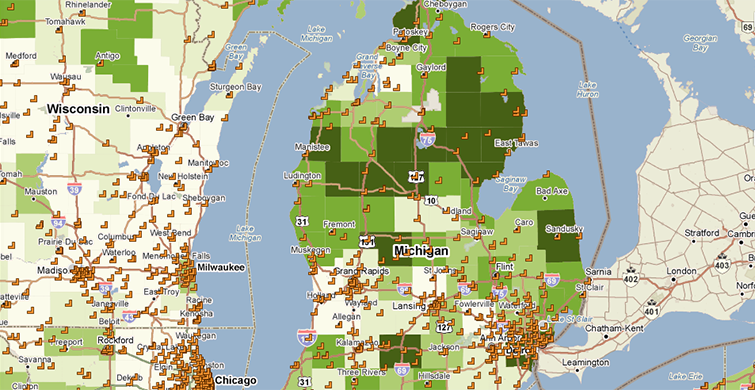It’s a SNAP… Affordable, Farm-Fresh Produce!

It’s National Farmers’ Market Week! To us here at PolicyMap, farmers’ markets are more than a place to pick the perfect summer tomato. As direct farm-to-consumer sales locations, farmers’ markets connect shoppers to the agricultural systems that grow our fruits, vegetables, and proteins.
 Increasingly, farmers’ markets are growing more accessible to low-income consumers. As of 2015, 27 percent of farmers’ markets accept SNAP (Supplemental Nutrition Assistance Program) benefits. Formerly known as food stamps, SNAP is a federal program that allows low-income and unemployed persons to purchase food. Though most supermarkets accept SNAP, many of the locations accepting benefits are corner stores, mini-marts, and other small locations not known for their fresh produce. In areas where food options are limited, farmers’ markets can be an important source of nutrition for low-income people. The map below shows the rate of SNAP-Authorized stores per person, with the locations of farmers markets accepting SNAP:
Increasingly, farmers’ markets are growing more accessible to low-income consumers. As of 2015, 27 percent of farmers’ markets accept SNAP (Supplemental Nutrition Assistance Program) benefits. Formerly known as food stamps, SNAP is a federal program that allows low-income and unemployed persons to purchase food. Though most supermarkets accept SNAP, many of the locations accepting benefits are corner stores, mini-marts, and other small locations not known for their fresh produce. In areas where food options are limited, farmers’ markets can be an important source of nutrition for low-income people. The map below shows the rate of SNAP-Authorized stores per person, with the locations of farmers markets accepting SNAP:
Farmers’ markets present many challenges to low-income shoppers. They are often open only one day per week, and some may not be transit accessible. Additionally, the cost of farm-fresh food can be high, and is sometimes out of reach for those on a tight budget. Many farmers’ markets and other food retail locations are now able provide financial incentives that increase the value of SNAP benefits, thanks to Food Insecurity Nutrition Incentive grants, a new USDA program. This program allows SNAP recipients to supplement their food budget with additional fruits and vegetables.
Data on SNAP benefits and farmers’ markets are also updated on the Healthy Food Access Portal Research Your Community interactive mapping tool, where you can learn more about how farmers’ markets fit into local food access strategies.